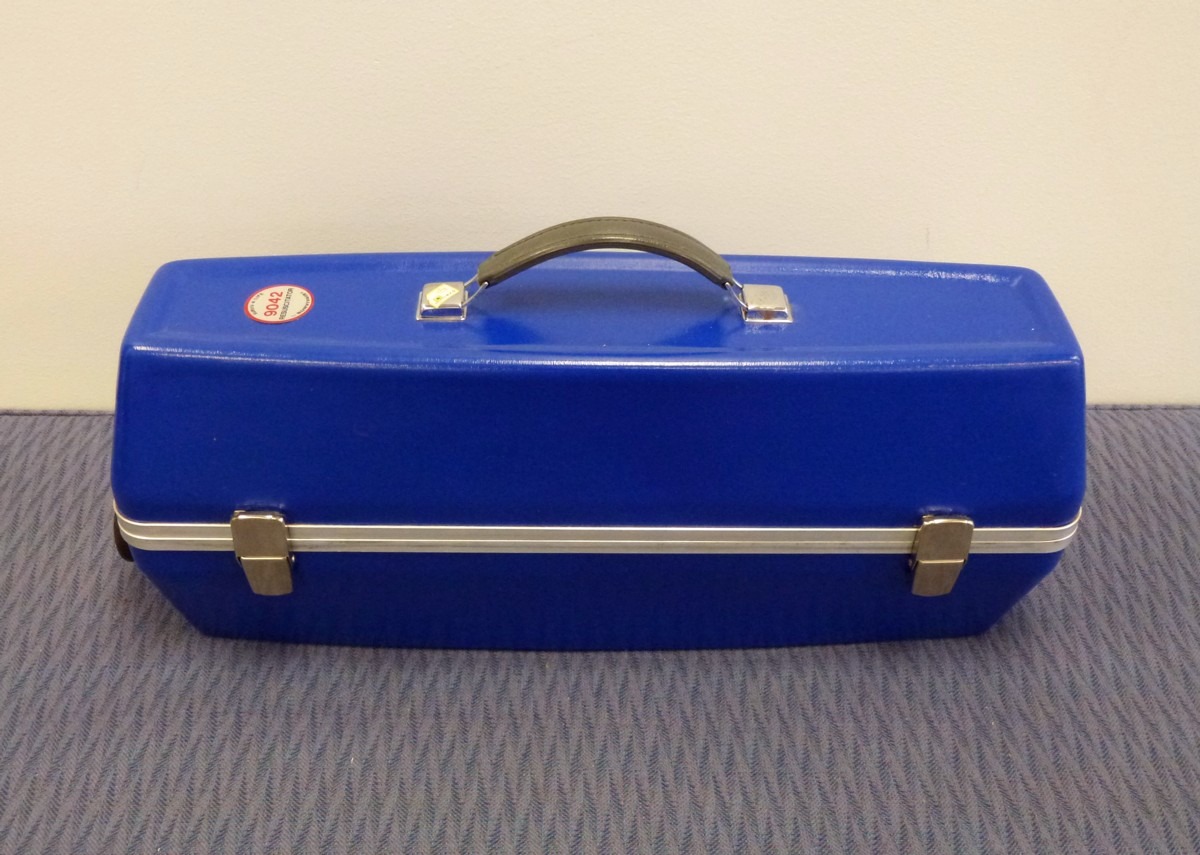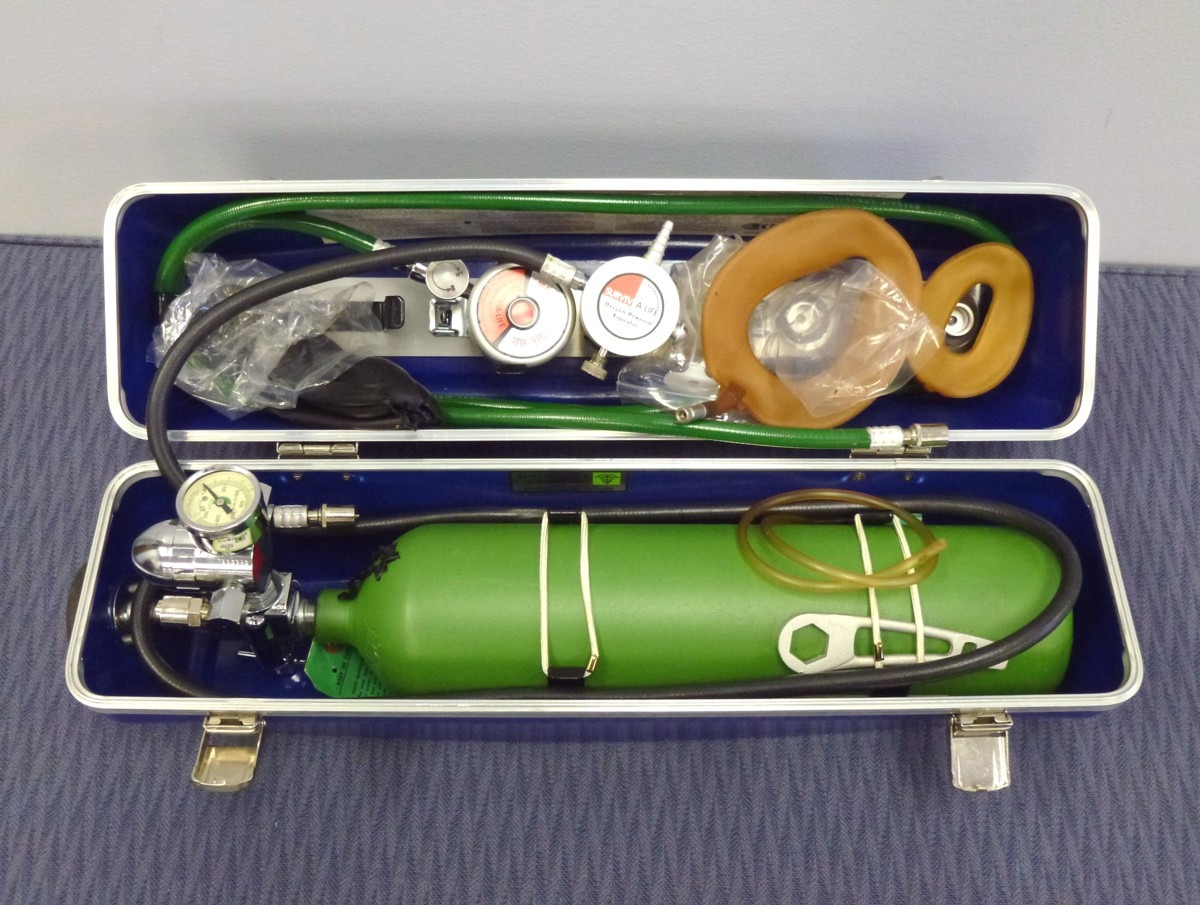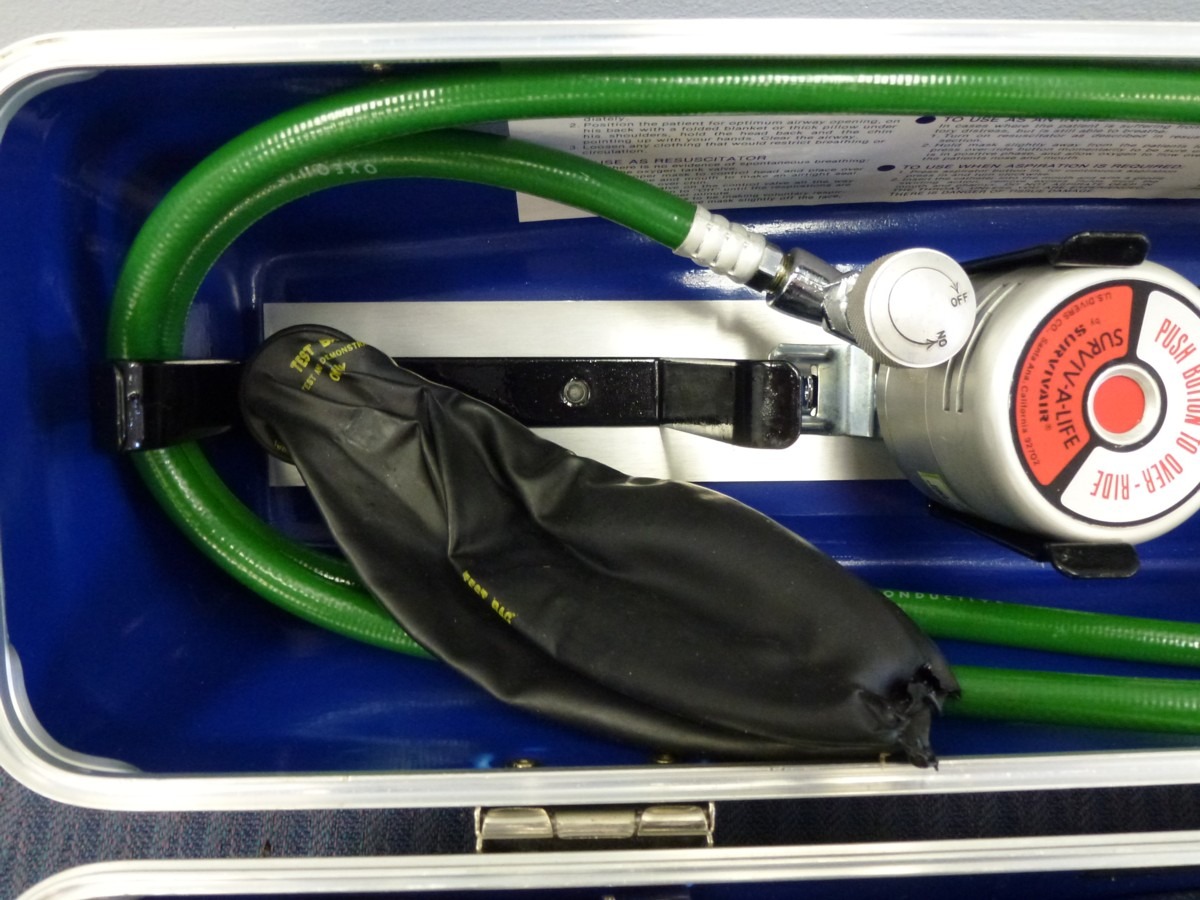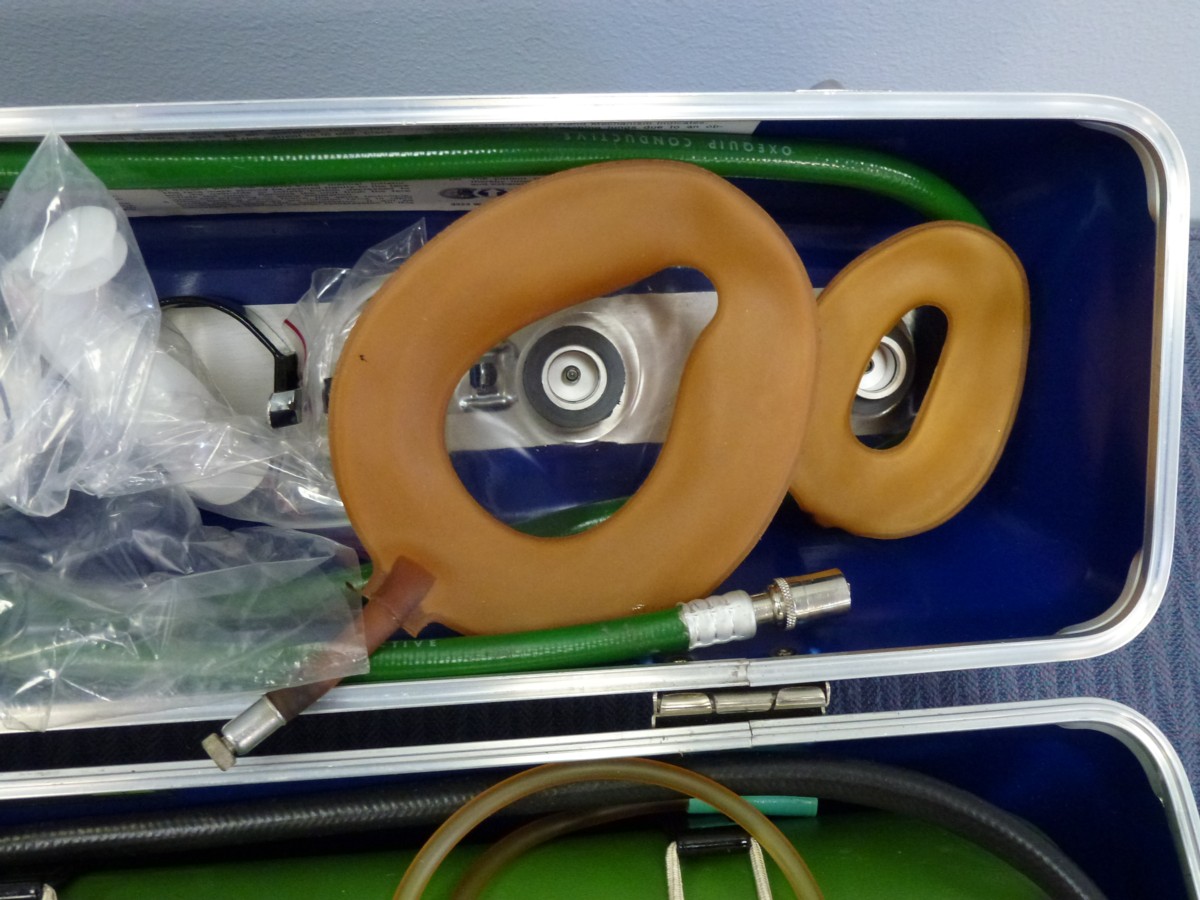by Alethea Drexler, archives assistant
mcgovern@exch.library.tmc.edu
I’ve noted several times that mystery objects are a common part of our jobs (there wouldn’t be Thingamjigs without them!).
Last week, our couriers arrived bright and early in the morning with an armload of returned books, newsletters to be stored away for safekeeping, and this:

I had not been notified about any new acquisitions, but no matter. Philip Montgomery, our archivist, was out of town and I thought whoever had donated it had probably notified him instead. Anyway, it wasn’t ticking or anything, so I put it in his office.
It seems I was wrong, because Phil came in on Monday, looked at it, and said, “What is that?”
So we opened it:

It’s a resuscitator[1]. Resuscitators are used to keep unconscious people who are not breathing on their own, oxygenated.
This one appears to be a gas- (oxygen-)powered[2] variety, which means that it uses positive pressure supplied by the oxygen tank to supply the patient. This is basically the same principle used by the anesthesia machines at my former job in a veterinary hospital, except that the anesthesia machines allowed the patient to breathe vaporized anesthetic along with the oxygen. They also, though, were driven by pressurized oxygen tanks.
The black rubber bag–alas, this one has aged and begun to “melt”–is the air chamber or, well, bag[3]:

When you’re watching “ER” and they start hollering about “bagging” a patient, this is what they mean–reviving somebody with a resuscitator (which has a “bag”). The bag, from which the patient inhales, fills with oxygen from the tank while the patient is exhaling, allowing a new breath to be administered immediately and the oxygen level delivered to be almost 100%.
Here are the masks, one large and one small. The brown rubber is the padding that protects the patient’s face.

This resuscitator was made by a company called Surviv-A-Life. I couldn’t find out much about them except that the trademark[4] was registered in 1976 and canceled in 2002. This is a model 9042 and the tag on it says it was filled in 1976. Many of the pieces are still sealed in plastic, so it appears never to have been used. I hope we can be glad it wasn’t needed?
The Surviv-A-Life was donated by a Mr. Chris Broad, who tells us he got it from a Houston-area dive expert named Kenny Young. Mr. Broad also noted that it was taken on board Jacques Cousteau‘s[5] ship RV Calypso[6].
[1] Resuscitator, Wikipedia.
[2] Gas-powered resuscitator, ECRI Institute Medical Device Safety Reports database.
[3] Bag valve mask, Wikipedia.
[4] Surviv-A-Life, Trademarkia.com
[5] Cousteau.org.
[6] RV Calypso, Wikipedia.